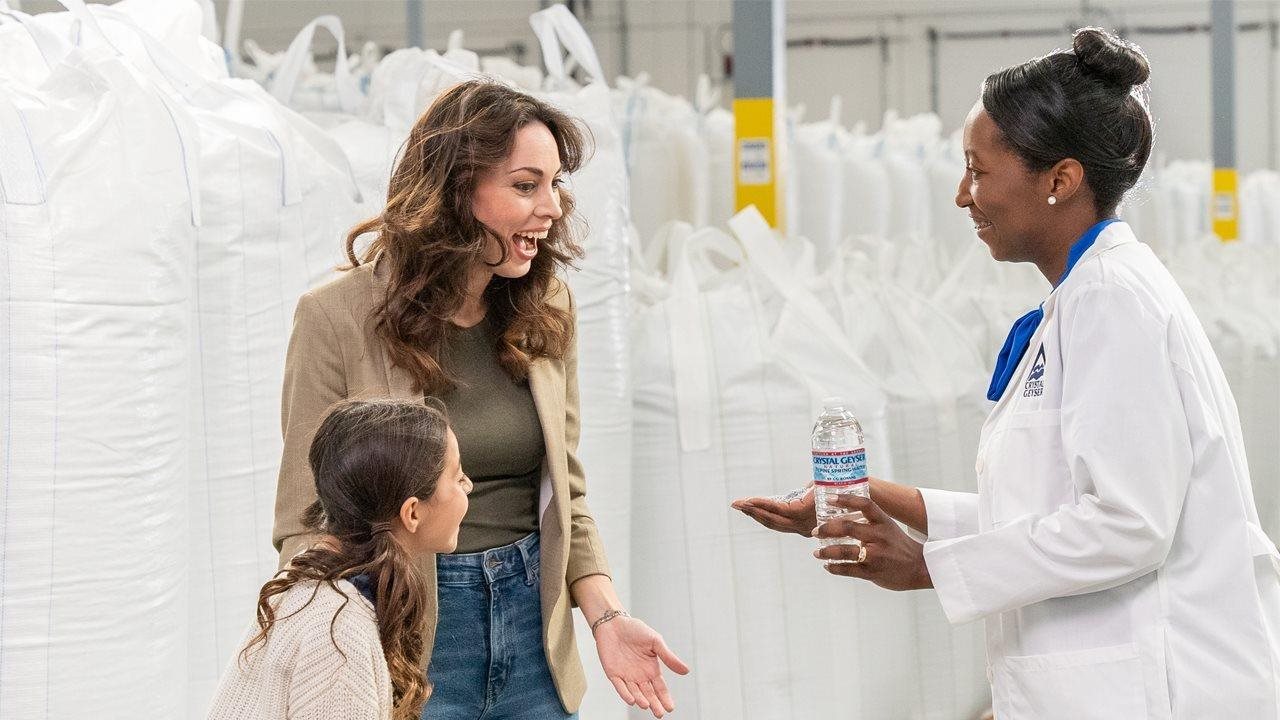
(BPT) – Can you recognize the symbol appearing on plastic products denoting they are recyclable? If not, you’re not alone. While many Americans are concerned about recycling, a recent study conducted on behalf of CG Roxane reveals that more education around recycling is still needed. Nearly one-third of Americans (32%) were unable to correctly identify the universal recycling symbol, and only 29% said they try to recycle when they can.
While many companies today are making an effort to contribute to the recycling ecosystem, including using more post-consumer recycled (PCR) materials, the study reveals that crucial components are missing in the recycling process: adequate consumer knowledge and participation, and perceived absence of local recycling services. This is partly due to a lack of information and understanding of how easily people can contribute to the recycling effort, and just how vital consumer participation is for the overall process to be successful.
In the study, over half of the respondents (51%) were unaware of initiatives many companies are working on when it comes to post-consumer recycled resin or PCR plastic, which is unsurprising, as 66% did not know what PCR plastic means. Once informed that it is plastic produced from post-consumer recycled resin and used to create new packaging to reduce the impact on landfill waste, 56% noted that purchasing PCR plastic products was important to them.
This summer, CG Roxane reached its goal of producing Crystal Geyser® Alpine Spring Water® bottles nationally using a minimum of 50% recycled polyethylene terephthalate (rPET) plastic. CG Roxane also uses an “EZ-Open Cap” on 8-ounce bottles, offering Californian consumers easy, one-click convenience while saving plastic. It also ensures the cap will never be lost, and helps to make recycling the bottle and cap simpler while also reducing potential harm to wildlife.
What you can do
Here are simple things you can do to play your part in increasing the success of recycling programs nationwide.
1. Choose products packaged in recyclable and PCR-produced containers
Buying containers created from at least some recycled material — and material that can be recycled again — goes a long way toward ensuring less ends up in landfills. For example, CG Roxane was the first U.S. beverage company to incorporate an in-house recycled polyethylene terephthalate (rPET) program, which allows them to bottle their Crystal Geyser® Alpine Spring Water® with a minimum of 50% rPET plastic nationwide between their San Bernardino, CA, and Benton, TN, plants.
By producing Crystal Geyser® Alpine Spring Water® bottles manufactured with no less than 50% recycled PET content, it will save nearly 11 thousand metric tons of CO2 per year, or the equivalent of removing 2,510 gasoline-powered passenger vehicles from the roads.
2. Familiarize yourself with the recycling symbol
If you see the symbol on a plastic bottle or packaging, you’ll know it’s possible to recycle that plastic. Items without that symbol are unlikely to be recyclable. Take a good look at the small number within the symbol, as those also have meanings. Additionally the numbers within the symbol indicate the type of plastic from which the container or packaging is made. While plastics labeled #1 (PET) or #2 (HDPE) are the most commonly recycled plastics everywhere, not all other numbers are collected in every recycling program.
3. Learn about your local recycling programs
Every city, county or municipality has its own rules and procedures regarding recycling. Go to your local government website to learn what recycling options are available where you live, and how you can participate. Guidelines may include which recycling numbers are accepted, as well as basic rules you may find everywhere, such as making sure plastic containers are clean, rinsed and dry before collecting for recycling.
Beyond bottling at the source and its increased commitment to using recycled materials and making packaging and delivery processes as efficient as possible, family-owned and operated CG Roxane actively participates in supporting its communities through partnerships with American Forests and the California Coastal Commission.
Learn more about CG Roxane’s efforts and how you can make a difference at CrystalGeyserPlease.com.
*Source: EPA.gov.
